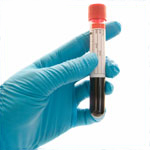By Aimee Wilcox, MA, CST, CCS-P If you've ever taken piano lessons, you know that the thumb is considered the first finger of the hand. However, when you are coding an x-ray of the thumb, you will find that this is considered part of the hand and not a finger. Let's look at the three codes we will be reviewing: • Code 73140 – Radiologic examination, finger(s), minimum of … [Read more...] about Codes for radiographs of the thumb
Coding
A clearinghouse isn’t the answer to ICD-10
Getting ready for ICD-10-CM Don’t plan to rely on a clearinghouse to get the office through ICD-10-CM. Clearinghouses can provide a lot of help, the government says, but not the same level of support they provided for the Version 5010 upgrade. The reason is that ICD-10 is based on clinical documentation, and the coding requires medical knowledge as well as familiarity with … [Read more...] about A clearinghouse isn’t the answer to ICD-10
Will you be ready for the big ICD-10 changeover?
The deadline for the changeover to ICD-10 is quickly approaching. Your medical office needs to be ready to make the switch to the new code version by Oct.1, 2015. On that date, the ICD-9 code sets used to report medical diagnoses and inpatient procedures will be replaced by ICD-10 code sets. The transition to ICD-10 is required for everyone covered by the Health Insurance … [Read more...] about Will you be ready for the big ICD-10 changeover?
Changes in facet joint coding affect your bottom line
By Aimee Wilcox, MA, CST, CCS-P If you work in pain management, anesthesia or interventional radiology, you are probably keenly aware of the changes that have occurred over the past three years with facet joint injection coding and its effect on your bottom line. What is a facet joint injection? A facet joint injection is a diagnostic procedure used to determine if the … [Read more...] about Changes in facet joint coding affect your bottom line
Coding for newborns in the US and the UK
By Therese M. Jorwic, MPH, RHIA, CCS, CCS-P Oyez! Oyez! The firstborn of Their Royal Highnesses the Duke and Duchess of Cambridge is had the new Prince George been born in the U.S., he would have been V30.00. That’s because we’re still using the ICD-9 codes while Great Britain has already moved to the international version of ICD-10. But Z38.0 or V30.00, it’s the best a … [Read more...] about Coding for newborns in the US and the UK
What effect will ICD-10 have on the office’s clinical documentation?
Getting ready for ICD-10-CM A big concern about ICD-10 is how the requirements for clinical documentation will change. The answer is that the new codes will not change the way a provider documents. Instead, they call for more information than ICD-9 requires. Yet most of it is information doctors are already documenting. Generally, the new required information falls into … [Read more...] about What effect will ICD-10 have on the office’s clinical documentation?
CKD with I-9 and I-10: not very much difference
ICD-9-CM and CPT By Therese M. Jorwic, MPH, RHIA, CCS, CCS-P More than 26 million adults in the U.S. have chronic kidney disease, or CKD. Millions more are at risk. Determining the extent of damage is usually done by testing the glomerular filtration rate, or GFR, which indicates the level of kidney function. And detection needs to be early, because left alone, the disease … [Read more...] about CKD with I-9 and I-10: not very much difference
Good ICD-10 training starts with the overall picture
By Therese M. Jorwic, MPH, RHIA CCS, CCS-P, FAHIMA The best way to begin ICD-10-CM training is to start at the beginning – what it is and where it comes from. ICD stands for International Classification of Diseases. It is a worldwide coding system established by the World Health Organization. The WHO is an arm of the United Nations that deals with international public health … [Read more...] about Good ICD-10 training starts with the overall picture
Coding stroke and its effects with I-9 and I-10
ICD-9-CM and CPT coding update By Therese M. Jorwic, MPH, RHIA, CCS, CCS-P Every year, about 795,000 people in the U.S. have a stroke. About 75% of those are first strokes; the rest are repeat strokes. Most- an estimated 87%- are ischemic, where a blood clot blocks a blood vessel to the brain. The others are hemorrhagic, or bleeding strokes. The severity of a stroke depends … [Read more...] about Coding stroke and its effects with I-9 and I-10
The asthma codes take a new turn with ICD-10
ICD-9-CM and CPT coding update By Therese M. Jorwic, MPH, RHIA, CCS, CCS-P Asthma is a condition so common (it affects 25 million Americans) that offices see it often as either a first-listed or secondary diagnosis. It’s a chronic disease, and the classic symptoms are wheezing, chest tightness, shortness of breath, and coughing, especially early and late in the day. With … [Read more...] about The asthma codes take a new turn with ICD-10








